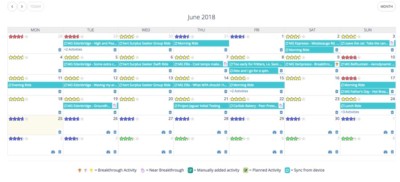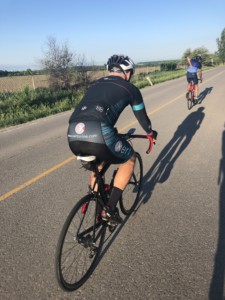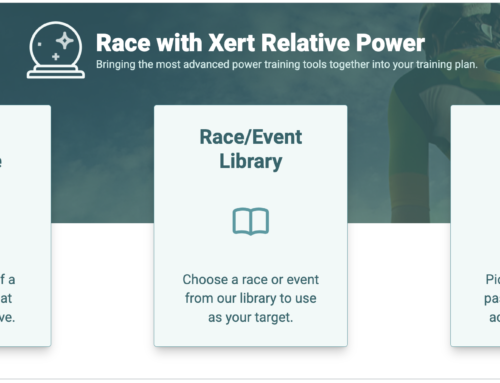Lately you haven’t had the ‘snap’ you had in the spring. Maybe you’re lacking the motivation to ride and it has gotten so bad that you haven’t even cleaned your chain (and people are starting to notice)! Does this sound like you? It may be time for a mid-season break…
If you’ve ever wondered if you need a mid-season break, how to take one, how to regain fitness after one, and how much fitness you’ll lose during a break, don’t despair – here is everything you need to know!
How to know if you need a mid-season break
If you live in the Northern Hemisphere, by July you’ve likely done a lot of riding or racing. You may have had goals in March and then tried to extend that fitness into June, or you simply took advantage of two or three months of warm weather. In training speak, you’ve accumulated a lot of Training Load (TL). Everyone’s ability to handle the volume differs, but even the pros reach a point where they need to take a physical and mental break from the bike. You know it’s probably time to take a break if:
- You feel flat, are experiencing reduced motivation, or are lacking ‘snap’ in your legs. You may even exhibit symptoms of mild depression;
- You have trouble falling asleep or staying asleep;
- You have higher than normal cravings for carbs and simple sugars;
- Your Training Load continues to rise but one or more of your Fitness Signature parameters (PP, HIE, TP) is declining. You may even feel like you’re putting in stronger and stronger efforts in training, but you’re not seeing any Breakthroughs;
- The Xert Adaptive Training Advisor (XATA) indicates that you should feel fresh but you’re not feeling fresh at all! (This is a great time to check your Account Settings / Profile to make sure your Time Constants read 22/12, 22/12, 60/5, not 42/7 across the board – those are outdated.) In fact, if you’re using the XATA you may not even be able to complete the prescribed workouts;
- Your family & friends are starting to complain that “you’re always on your bike”!
What are the benefits of taking a mid-season break?
If you have late-season races like cyclocross, or you’d like to be ready for some long rides at Xert’s Breakthrough Camp in Mallorca, a return to riding and training after a break often results in a higher Fitness Signature. Truth: you don’t lose nearly as much fitness in a week or two as you think you do, especially if you remain active! In most cases, the fitness that takes a long time to gain also takes a long time to lose.
Here are is rough list of the changes you’re likely to see by week*:
1 week of no training: no change in muscle mass, muscle strength, or endurance capacity
2 weeks of no training: up to 7% decrease in VO2 Max but still no change in muscle mass or muscle strength.
3 weeks of no training: ~9% decrease in VO2 Max. Muscle mass and muscle strength begin to decline slightly in some individuals but testosterone and growth hormone levels increase creating an environment conducive to greater gains if you resume training at this time. You may look smaller because of the depletion of glycogen stores in your muscles.
4-8 weeks of no training: Decrease in strength and muscle mass in most individuals. VO2 Max losses by 4 weeks can be quickly reversed by beginners but highly trained athletes could see as much as a 20% reduction in VO2 Max and require more time to gain back.
The best thing an endurance athlete can do is to avoid breaks lasting longer than 2-3 weeks.
What are the risk of not taking a mid-season break?
Some riders can handle higher TL’s than others – they just recover faster. But this also depends on the ratio of Peak/High/Low stress. A high TL of nearly all low strain work can be easier to recover from than a high TL with > 25% of the strain at Peak or High strain levels. The bottom line is this: it doesn’t matter! What matters is you, and only you. If you’re tired & flat, don’t listen to your friends who say they are riding a lot more than you and feeling fresh! If you need a break but don’t take one, the repercussions can be mild to severe depending on how long you try to ride it out (pun intended!) and your own personal physiology.
This is a great time to talk about the fine line between overreaching and overtraining. Understanding the differences can mean taking a week or two of rest or losing more than a season’s worth of fitness, training and racing.
Overreaching is an accumulation of training and/or non-training stress resulting in a short-term decrease in performance sometimes accompanied by some physiological and psychological stress. Once an athlete is over trained, restoration of performance capacity may take several days to several weeks.
“Overtraining Syndrome” (OTS) as it is referred to in the medical literature, is a serious problem marked most noticeably by a decrease in performance (strength, speed, endurance, or other), increased fatigue, persistent muscle soreness, mood disturbances, and feeling “burnt out” or “stale.“
What to do during your mid-season break
The answer is simple: potentially nothing. It depends on how deep you’ve gone (again, think of overreaching vs overtraining). If the strain and fatigue has been deep, the mid-season break may be a passive week of complete rest. With recreational riders, lower category racers and new age groupers it may only be 3 days of zero activity followed by a couple days of cross training in the gym, followed by ‘free’ rides on the weekend. These free rides are done at low intensities and without any intervals.
Ultimately, the relative inactivity is what makes a break so hard, especially for the first few days. If you lack the self-control need to put your feet up, lock up your bike and give the keys to someone else. Or deflate the tires and ‘lend’ your pump to someone who can’t be trusted to give it back promptly!
In your Xert account, set your Improvement Rate (IR) to ‘Off-Season’ to get the Adaptive Training Advisor to let you off the hook.
Besides not riding, you also shouldn’t be doing any other activities that produce a lot of strain. You can keep going to the gym if that’s your routine, but take a week off the leg-related exercises. Use this time to focus on your core strength and flexibility instead. This is a great time to head out for some hikes or walks, and if you must ride your bike, put on your platform pedals and use your bike to roll down to your favourite coffee shop.
Speaking of coffee shops, the biggest risk with a rest week is not a loss in fitness, it’s gaining weight. That’s because: a) you’re used to burning A LOT of calories, so you eat them too, and b) you’re bored. So load up on rice cakes, water, and most importantly – have something else to do. Take a vacation, make up time with a significant other, or complete a couple of jobs around the house. Take it easy – be a professional recovery artist.
“One of my favorite things to do with my athletes during a midseason break is to review the goals that were set at the beginning of the season and evaluate their progress. Quite often we find that performance-oriented goals have been met or exceeded. This means that we can work on other training factors in the second half of the season that can further improve the odds of reaching new performance goals or outcome-based goals. I also recommend cyclists who are contemplating making a category upgrade to do this in the second half of a season. This way the athlete can gain some great insights into what will be required in the upcoming off-season to be ready for next year.” says coach Rob Grissom, of Positive Performance Coaching.
Returning to training after your mid-season break
Depending on the demands of your later season priority race(s) it can take 6-8 weeks before seeing appreciable adaptations in power and anaerobic endurance.
First, set your next goal date in Xert. We recommend that you set it far enough out – temporarily – so that the Adaptive Training Advisor places you in the Base phase for at least a couple of weeks.
Second, dial your IR setting back up. But don’t take it all the way up to your previous setting for the first few days or you could be doing 2hr rides on your first day back.
In the first week, use the free ride workout idea for the first several days, then move to pure endurance riding for the rest of the week. For the second week add in some high cadence work in lighter gearing to keep the stress low, then add at least one workout by the second weekend that mimics the demands of racing. Coach Rob calls it the “breaking the legs lose” ride.
You may find you feel terrible on your first rides back. Your butt may hurt, your muscles may not respond, and your knees may even feel ‘twingy’. That will be short-lived; your body hasn’t forgotten how to ride, it’s just gotten out of the habit. You need to ease your way back into training and this starts with easy rides. This is the time to restore your endurance.
After a couple of weeks of endurance work, and of restoring your TL again, change your Target Event Date to the correct date and move into the training recommended by XATA.
Now you’re all set for a strong second half of the season, so enjoy your new-found motivation, form and snap!
Thanks to Coach Rob Grissom from Positive Performance Coaching for contributing to this post!








